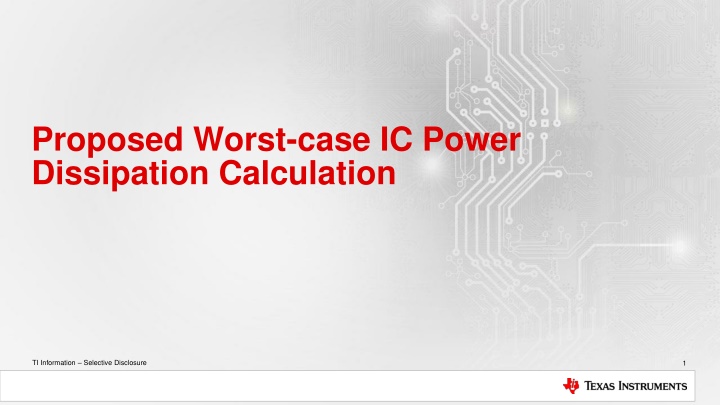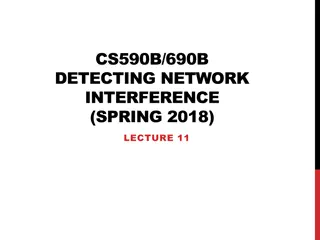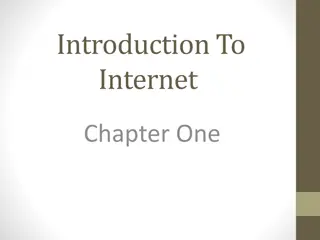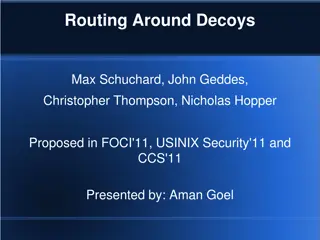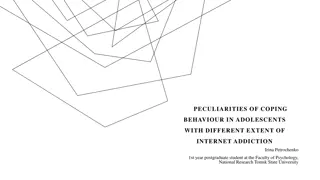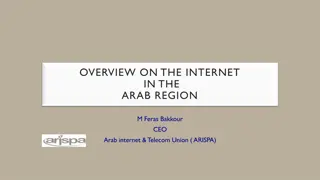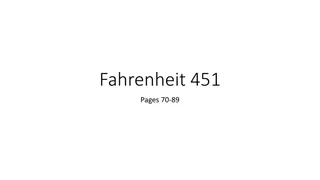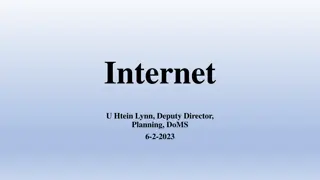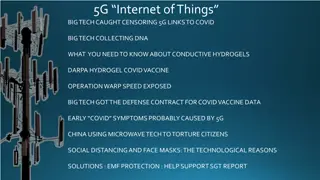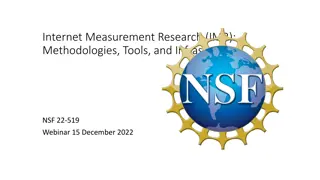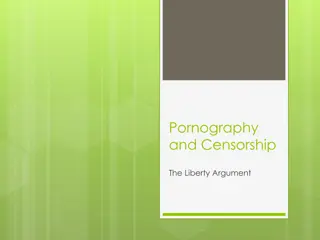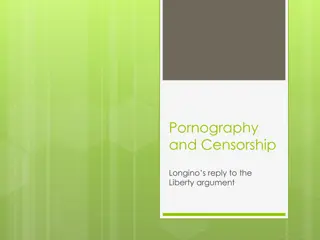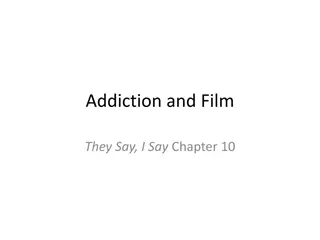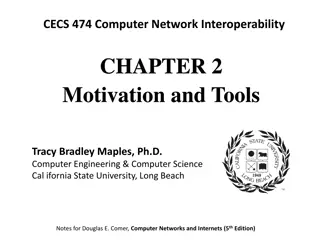Internet Censorship Methods
Dive into the complexities of Internet censorship methods, from blocking IP addresses to disrupting TCP flows. Explore the functionality of TCP in ensuring reliable communication and the implications of injecting TCP reset packets. Learn about different types of censors and their capabilities, including on-path operations and packet injection techniques.
Download Presentation

Please find below an Image/Link to download the presentation.
The content on the website is provided AS IS for your information and personal use only. It may not be sold, licensed, or shared on other websites without obtaining consent from the author.If you encounter any issues during the download, it is possible that the publisher has removed the file from their server.
You are allowed to download the files provided on this website for personal or commercial use, subject to the condition that they are used lawfully. All files are the property of their respective owners.
The content on the website is provided AS IS for your information and personal use only. It may not be sold, licensed, or shared on other websites without obtaining consent from the author.
E N D
Presentation Transcript
Proposed Worst-case IC Power Dissipation Calculation TI Information Selective Disclosure TI Information Selective Disclosure 1
IC_Pd = PCOND_Mos + PSW + PGD + PIQ Take the value in Webench simulation result VIN * IQ can be considered as constant in the entire temperature range PHIGH_COND + PLOW_COND LPDC - Maciej Miler TI Information Selective Disclosure
ICPD (IC Power dissipation) Input all the application conditions (Vin, Vout, Iout) in Webench. Set the temperature to 30oC Click the Customize button to modify the passive component parameters (Cin, Cout, Lout, RFB) if necessary. Use the SIMULATE function to calculate for the IC power dissipation Go to Export to generate the design report. Get the ICpower dissipation data click to open the Webench design report Example: Webench link: https://webench.ti.com/power-designer/switching-regulator LPDC - Maciej Miler TI Information Selective Disclosure 3
Mosfet Conduction losses High-side FET conduction loss PHScond: high-side FET conduction loss PLScond: low-side FET conduction loss *RDSonHS: high-side FET on-state resistance *RDSonLS: high-side FET on-state resistance IO: output current D: duty cycle (Vout / Vin) ?_??? : inductor peak-peak ripple current 1 12 ?_??? ?? 2 = ??????? ??2 ? ??????? 1 + Low-side FET conduction loss 1 12 ?_??? ?? 2 = ??????? ??2 1 ? ??????? 1 + for worst case analysis, use the max on-state resistance indicated in the datasheet take the calculated duty cycle and inductor peak- peak current ripple in Webench simulation result reference: https://www.ti.com/lit/an/slvaeq9/slvaeq9.pdf?ts=1665007621996 LPDC - Maciej Miler TI Information Selective Disclosure 4
Calculate PSW + PGD Application condition Vin = 3.3V Vout = 1.8V Iout = 1.0A 1 12 ?_??? ?? 1 12 2 = ??????? ??2 ? ??????? 1 + ?_??? ?? 2 = ??????? ??2 1 ? ??????? 1 + Calculate for PSW + PGD at Tamb = 30 oC IC_Pd = 148.39 mW (from Webench) PHS_cond = 37m * (1A)2 * (0.37) * (1 + 1/12 (1.103A)2) = 15.08mW PLS_cond = 15m * (1A)2 * (1 0.37) * (1 + 1/12 (1.103A)2) = 10.41mW PIQ = 5.0V * 15 A = 75 W PSW + PGD = IC_Pd + (PHScond + PLScond) + PIQ = 148.39mW 10.41mW 15.08mW - 75 W PSW + PGD = 122.675mW LPDC - Maciej Miler TI Information Selective Disclosure 5
Worst-case calculation sample PSW + PGD = 122.675mW PHS_cond = 60m * (1A)2 * (0.37) * (1 + 1/12 (1.103A)2) = 24.45mW (wc on-state resistance) PLS_cond = 35m * (1A)2 * (1 0.37) * (1 + 1/12 (1.103A)2) = 24.28mW (wc on-state resistance) PIQ = 5.0V * 30mA = 150 W IC_Pd = PCOND_Mos + PSW + PGD + PIQ IC_Pd = (24.45mW + 24.28mW) + (122.675mW) + 150 W IC_Pd = 171.55mW LPDC - Maciej Miler TI Information Selective Disclosure 6
Important notice and disclaimer TI PROVIDES TECHNICAL AND RELIABILITY DATA (INCLUDING DATASHEETS), DESIGN RESOURCES (INCLUDING REFERENCE DESIGNS), APPLICATION OR OTHER DESIGN ADVICE, WEB TOOLS, SAFETY INFORMATION, AND OTHER RESOURCES AS IS AND WITH ALL FAULTS, AND DISCLAIMS ALL WARRANTIES, EXPRESS AND IMPLIED, INCLUDING WITHOUT LIMITATION ANY IMPLIED WARRANTIES OF MERCHANTABILITY, FITNESS FOR A PARTICULAR PURPOSE OR NON-INFRINGEMENT OF THIRD PARTY INTELLECTUAL PROPERTY RIGHTS. These resources are intended for skilled developers designing with TI products. You are solely responsible for (1) selecting the appropriate TI products for your application, (2) designing, validating and testing your application, and (3) ensuring your application meets applicable standards, and any other safety, security, or other requirements. These resources are subject to change without notice. TI grants you permission to use these resources only for development of an application that uses the TI products described in the resource. Other reproduction and display of these resources is prohibited. No license is granted to any other TI intellectual property right or to any third party intellectual property right. TI disclaims responsibility for, and you will fully indemnify TI and its representatives against, any claims, damages, costs, losses, and liabilities arising out of your use of these resources. TI s products are provided subject to TI s Terms of Sale or other applicable terms available either on ti.com or provided in conjunction with such TI products. TI s provision of these resources does not expand or otherwise alter TI s applicable warranties or warranty disclaimers for TI products. TI Information Selective Disclosure 7
